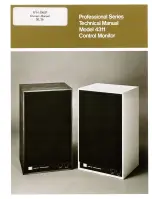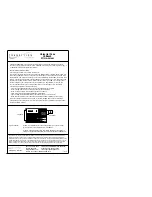
11
Operating instructions for EE360 Moisture in Oil
3.3 Probe mounting
The probe shall be mounted horizontally or vertically pointing downwards.
For accurate measurement it is of paramount importance to avoid T gradients along the probe. In case
of large T difference between the front and the back of the probe, it is highly recommended to insert the
probe completely into the process. Should this not be possible, place a thermal isolation layer on the
part of the probe outside the process (on the cable side).
Fig. 9
EE360 probe
General safety instructions for installation
The.installation,.commissioning.and.operation.of.the.EE360.may.be.performed.by.qualified.staff.only..
Special attention shall be paid to the correct installation of the probe into the process. In case of inap-
propriate installation there is the risk for the probe to be suddenly expulsed due to the pressure in the
process.
Bending over the sensing probe should be avoided under any circumstances!
Make sure that the surface of the probe is not damaged during installation. A damaged probe surface
may lead to damaged seals and consequently to leakage and pressure loss.
3.3.1 Installation of the probe directly in the process
(see
Fig. 10 Installation of the EE360 probe directly into the process)
For direct probe installation into a duct stop valves should be provided on both sides of the probe insert.
This allows the sensor probe to be easily removed for maintenance and calibration.
For direct installation into a pressure chamber make sure that the pressure in the chamber
and the ambient pressure are equal before removing the probe. The temperature during probe installa-
tion may deviate by max. ±40 °C
(±72 °F)
from the regular temperature during normal operation.
Replace the metal sealing ring (see
Fig. 10 Installation of the EE360 probe directly into the process
) by
a new one every time before re-installing the probe.
Probe installation steps
•.
Close both valves.
•.
Place the sensor probe into the probe insert and adjust the immersion depth.
•.
Tighten the lock nut with a torque of 30 Nm.
•.
Open the valves.
Observe strictly the tightening torque.
A torque lower than 30 Nm results in a smaller retention force of the clamping sleeve. This leads
the risk of sudden expulsion of the sensing probe due to the pressure. A torque higher than
30 Nm may lead to permanent deformation of the clamping sleeve and the sensing probe. This would
make.the.removal.and.re-installation.of.the.probe.difficult.or.even.impossible.












































